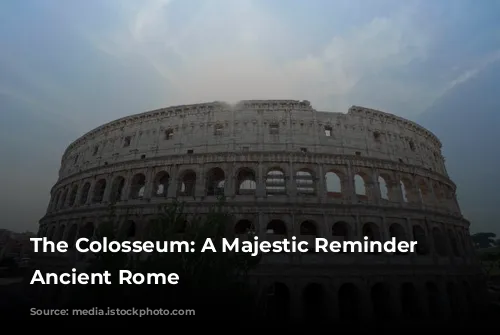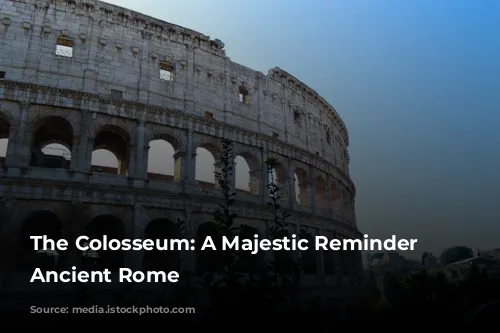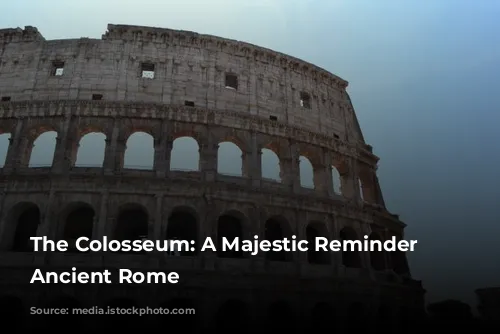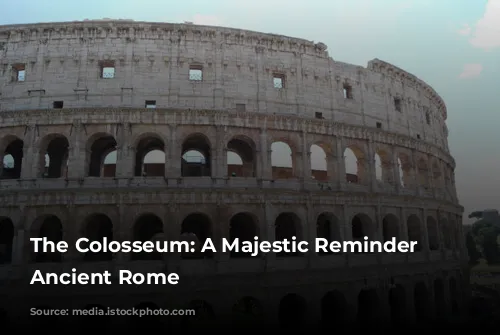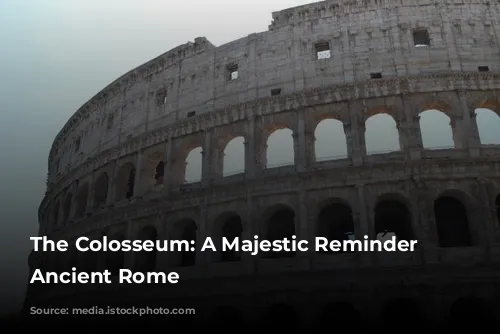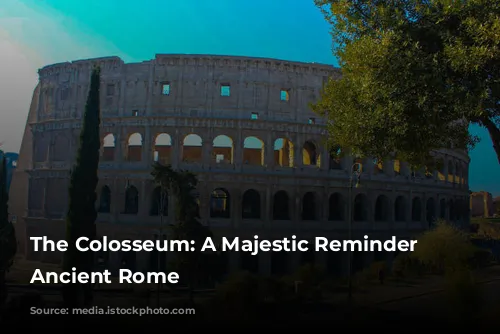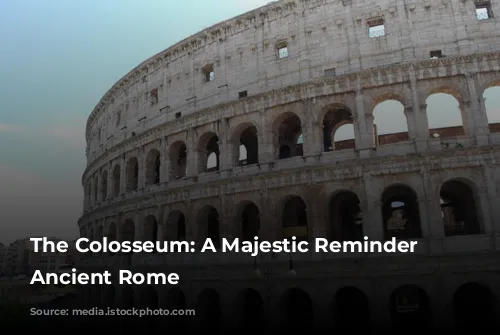The Colosseum, also known as the Flavian Amphitheatre, stands as a testament to the grandeur and might of the Roman Empire. This colossal structure, the largest amphitheatre ever built, is not only a monumental symbol of Rome but also one of the most famous landmarks in the world.
A Monument Built for Spectacle
The Colosseum was commissioned by Emperor Vespasian of the Flavian dynasty and inaugurated by his son, Titus, in 80 AD. Its inauguration ceremony was a spectacle of unprecedented grandeur, lasting one hundred days. The event featured thrilling gladiatorial contests, animal hunts, and even naumachiae – impressive mock sea battles that transformed the arena into a temporary lake.
The Colosseum’s name itself holds a fascinating history. It originated from a prophecy by the Venerable Bede, a medieval monk, who claimed that Rome would stand as long as the Colosseum. He likely derived the name from the towering statue of Emperor Nero, known as the “Colossus,” which stood near the amphitheatre.
Engineering Marvels: The Construction of the Colosseum
The Colosseum’s construction was a remarkable feat of engineering. The Romans utilized their mastery of the arch, a structural element that allowed them to distribute weight effectively and create monumental structures. This technique is evident in other Roman masterpieces, such as the aqueducts.
The Colosseum can be visualized as a series of aqueducts stacked one atop the other. Its elliptical shape, designed to accommodate a large audience, was built with travertine stone slabs, initially giving it a brilliant white appearance. The amphitheatre featured four floors, the first three adorned with eighty arches each.
A Seat for Every Social Status
The Colosseum could hold up to seventy thousand spectators, providing a breathtaking spectacle for all. Entry was free for Roman citizens, but seating was meticulously arranged according to social hierarchy. The higher tiers were reserved for the common people, while the lower tiers accommodated the elite, including senators, priests, and, of course, the emperor.
The Colosseum also boasted a sophisticated sunshade system, the “Velarium.” This enormous linen tarpaulin, manipulated by one hundred sailors from the Imperial fleet, provided shade for the spectators during the intense Roman sun.
The Arena and its Secrets
The arena itself was a stage for both symbolic and practical events. It housed the gladiatorial combats, animal hunts, and theatrical productions. The Colosseum’s underground cellars, accessible through trapdoors in the arena floor, were used to house equipment and to facilitate dramatic entrances of animals and gladiators, creating a thrilling sense of surprise for the audience.
The Gladiatorial Games: A Symbol of Roman Power
The gladiatorial games were a cornerstone of the Colosseum’s spectacles. Gladiators, mostly prisoners of war or volunteers seeking fame and fortune, were divided into twelve different categories, each with its unique fighting style and weaponry. The combats were often brutal, showcasing the raw power and skill of the gladiators.
The audience’s response to the fights was passionate and visceral. The roar of the crowd, the clanging of weapons, and the smell of blood permeated the air, creating an atmosphere of both excitement and brutality.
The Colosseum: A Symbol of Roman Power and a Legacy for the World
The Colosseum’s history is a tapestry woven with tales of power, spectacle, and the resilience of a civilization. Although the Colosseum today stands as a shell of its former glory, its grandeur remains awe-inspiring. It is a testament to the ingenuity of Roman engineering, the passion of the Roman people, and the enduring legacy of the ancient world.
The Colosseum’s transformation from a thriving arena to a source of building materials during the Middle Ages serves as a reminder of the cyclical nature of history. Today, it stands as a powerful symbol of the rise and fall of civilizations and the lasting influence of the past on the present.
